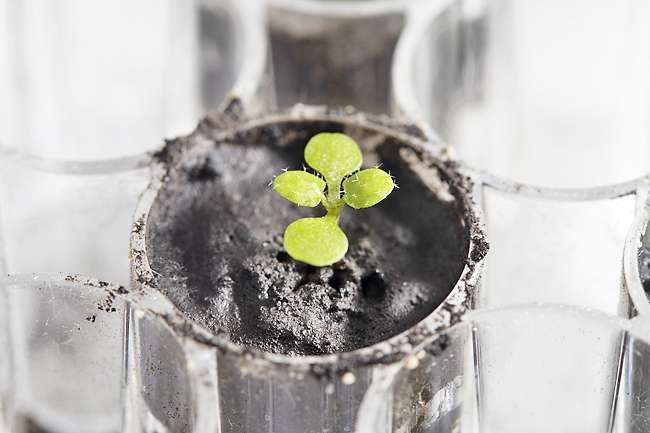THE WASHINGTON POST – Dig a hole in the ground, stick in a seed, and water it. Weeks later you’ll have a nice tomato or pepper or lettuce leaf to eat. But not on the moon.
The moon’s surface is made of regolith. This is rocky dust that settled on some parts of the moon from lava flowing out of now-extinct volcanoes. It does not contain microbes such as fungi and bacteria and nematodes that make nutritious soil on Earth. But new research shows that something can grow in regolith: a weed called mouse-ear cress (Arabidopsis thaliana).
For the first time, researchers at the University of Florida grew 12 tiny cress plants in lunar regolith brought back on three Apollo missions in the 1960s and ‘70s.
But astronauts who may start returning to the moon in 2025 won’t be raising their own food anytime soon. The cress doesn’t grow very well after it’s used up the nutrients that all seeds contain, explained Ralph Fritsche. He’s senior project manager for space crop production and exploration food systems at NASA’s Kennedy Space Center.
As its roots dig into regolith, “it either encounter[s] things that are detrimental to growth, or it (doesn’t get) enough positive things” to help it grow, Fritsche said.

There were other challenges to getting those cress seedlings to germinate. For example, “As soon as you wet [regolith], it turns into almost a pre-concrete,” said Fritsche. Roots can’t penetrate it to access the water or air or minerals they need. Nutrients had to be added to turn the regolith into “a usable soil for plants”, he said.
Mamta Nagaraja is NASA’s deputy programme scientist for space biology. She said there will be many more hurdles to farming on the moon.
For starters, figuring out where to grow plants. Should it be in greenhouses or in the same habitats where the astronauts will live? “We wouldn’t just plant in the ground,” Nagaraja said.
Scientists also need to work out how plants can get the right amount of sunlight. Being able to scrub carbon dioxide from the air so there’s enough oxygen for plants and humans is critical. So is figuring out how to pollinate plants, with or without bees. And so is understanding how radiation affects plants and seeds.
“The whole reason for space farming would be to grow food that astronauts can consume. Is there any difference in the nutritional value of those plants when they’ve been exposed to these elements of space?” Nagaraja said.
Designing watering systems has also been tricky. Astronauts on the International Space Station have been experimenting with recycling human urine. But so far, attempts to get water to where the plants need it and to mix with air in the root zone haven’t worked. Said Nagaraja, “The plants don’t get the water the way we think they will, or they don’t get the water at all.”
The difficulties in farming on the moon can seem so huge it’s hard to imagine when it might be possible. But little by little, researchers chip away at the many problems. One day, Nagaraja imagines astronauts “putting together a nice salad. That’s got to be so refreshing – to have a nice fresh tomato” in space, she said.






